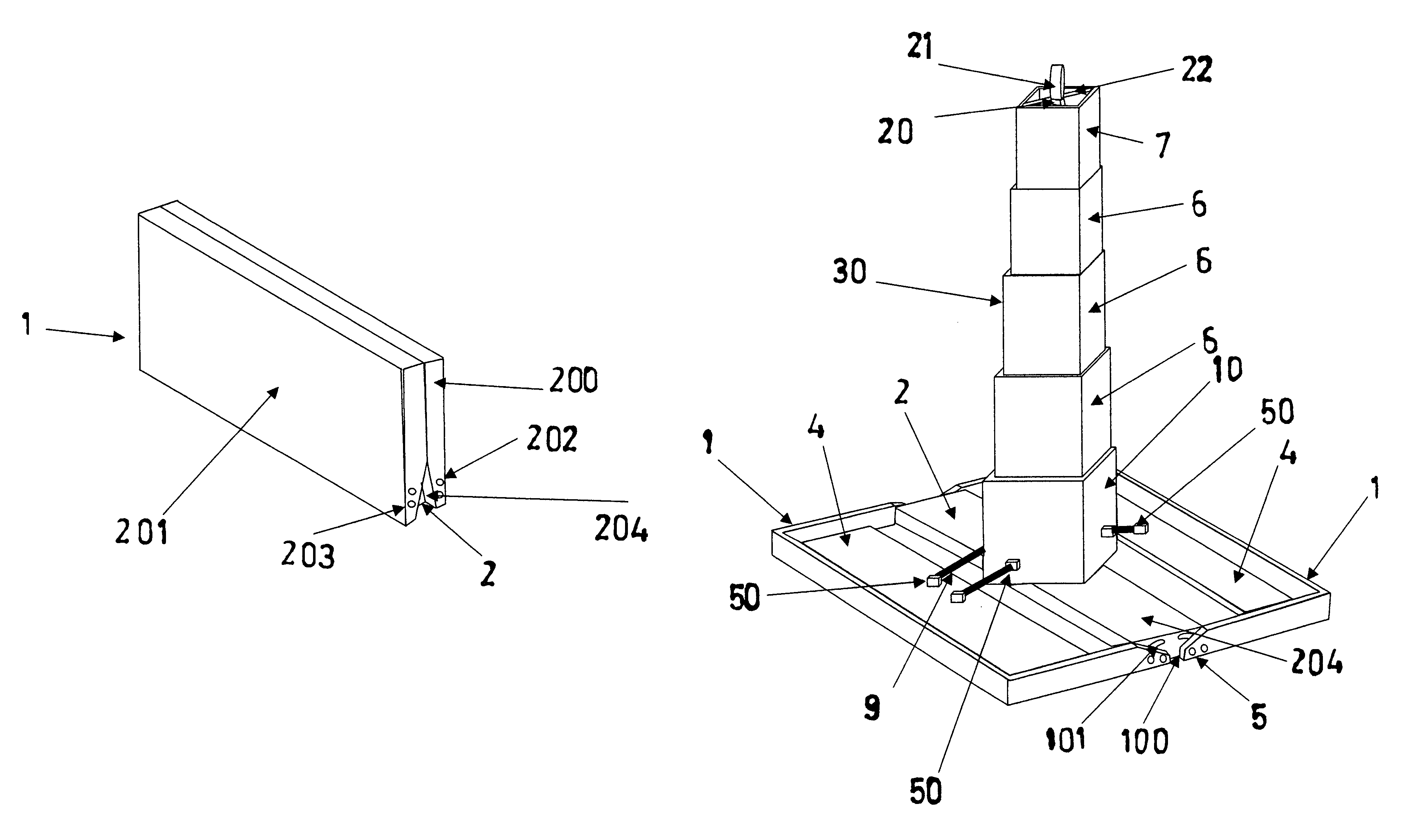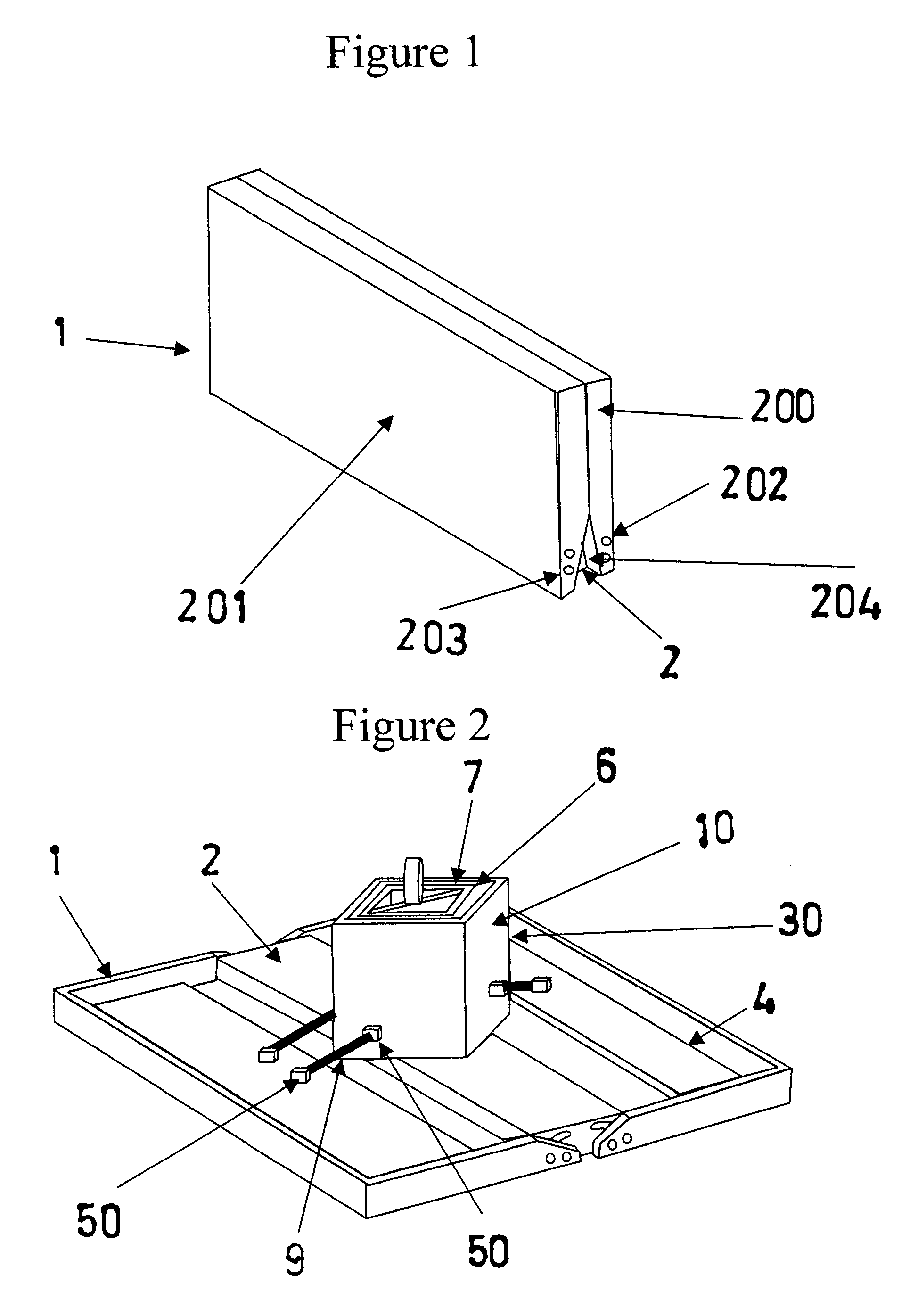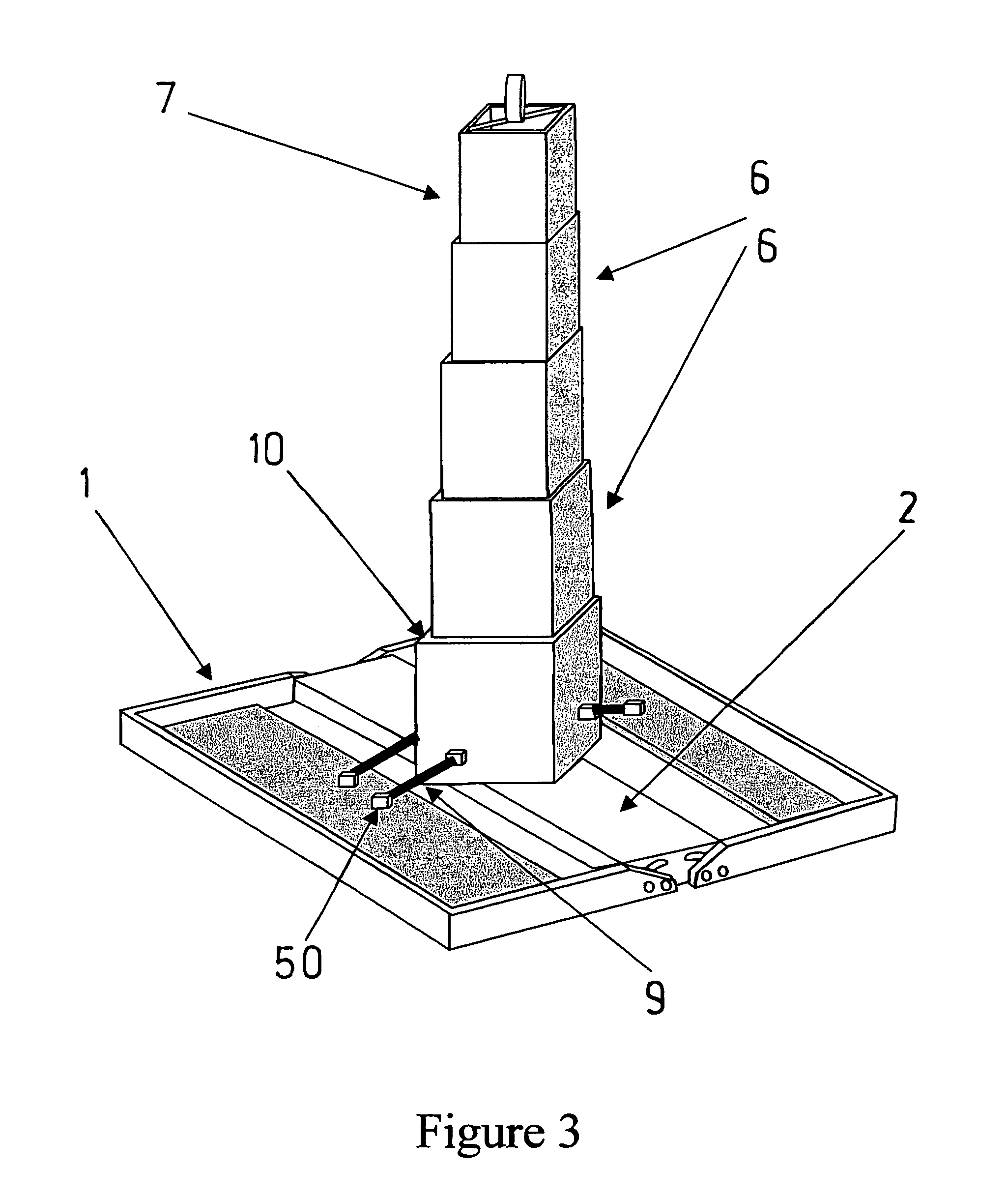Condensed retractable safety marker
a safety marker and condensed technology, applied in the field of condensed retractable safety markers, can solve the problems of inability to reuse, inability to meet the needs of use, so as to reduce the cost
- Summary
- Abstract
- Description
- Claims
- Application Information
AI Technical Summary
Benefits of technology
Problems solved by technology
Method used
Image
Examples
second embodiment
[0029]the invention is illustrated in FIG. 5. As illustrated in the figure, lower, middle and upper rectangular shaped hollow vertical risers (10,6,7) may be designed with “air-flow” holes (205) as to reduce the overall wind load on the structure.
third embodiment
[0030]FIG. 6 illustrates the present invention, in the open and expanded position without the vertical risers and is intended to show the placement of the retractable arm (20) in relation to the base supports (1) and the lower portion (2).
fourth embodiment
[0031]the invention is illustrated in FIG. 7, the lower portion of the retractable arm (20) may be designed in the shape of a spring (60) to allow for greater flexibility of the device. This flexibility would allow for temporary slight displacement of the lower, middle and upper rectangular shaped hollow vertical risers (10,6,7) under high wind conditions, thus reducing the necessary weight of the support weights (4).
[0032]To deploy the current invention, the user simply rotates the two base supports (1) about the lower portion (2) into a locked position perpendicular to the retractable arm (20), and then lifts the lower, middle and upper rectangular shaped hollow vertical risers (10,6,7) into a locked vertical position by use of the handle (21) on the upper portion of the retractable arm (20). The device is now ready for use.
PUM
 Login to View More
Login to View More Abstract
Description
Claims
Application Information
 Login to View More
Login to View More - R&D
- Intellectual Property
- Life Sciences
- Materials
- Tech Scout
- Unparalleled Data Quality
- Higher Quality Content
- 60% Fewer Hallucinations
Browse by: Latest US Patents, China's latest patents, Technical Efficacy Thesaurus, Application Domain, Technology Topic, Popular Technical Reports.
© 2025 PatSnap. All rights reserved.Legal|Privacy policy|Modern Slavery Act Transparency Statement|Sitemap|About US| Contact US: help@patsnap.com



